The Secret History of Hyderabad State of the Nizam (South India; 1724 – 1948)
Last Updated on July 15, 2021 by Hamad Subani
Illuminati takeover of Hyderabad State (1883-1948)

The period following the death of Salar Jang I in 1883 to the end of the Hyderabad State in 1948 is the darkest period in the history of Hyderabad State. Outwardly, this was time of great progress and prosperity. Hyderabad State was on the road to industrialization, well ahead of the rest of the Indian Subcontinent. But following the death of Salar Jung I, British Intelligence, in conjunction with some shadowy Shiites and crypto-Shiites took control over Hyderabad State. This was done by hijacking the Office of the Prime Minister. This is evident from the number of times Prime Ministers changed since Salar Jung I. Prior to Salar Jung I, it was not unusual to see the same Prime Minister carry on for more than a decade. But now, the Prime Minister faced a tug of war with British Intelligence on one side and the Nizam on the other side. Many Prime Ministers were compromised candidates. The Nizam also tried to insert his own candidates, but they were harassed by the Powers That Be to the point of resignation. Suspicious figures also inserted themselves in the Nizam’s personal circle. For example, an Armenian Jew named Albert Abid became the personal valet of Mahbub Ali Khan by passing as a European. He would acquire great wealth by setting up shops. The Abids shopping district of Hyderabad is named after his shops. Establishment historians mark the end of Hyderabad State in 1948. While this was indeed the official (and accidental, as we shall see) end of the Hyderabad State, I am of the opinion that the Nizam lost sovereignty in 1883. Obviously, this loss of sovereignty was always kept as an undocumented secret by the Powers That Be, and was never meant to be part of the official narrative.
Prior to 1857, the Illuminati policy towards the Hyderabad State was to fully encourage the financial rapaciousness of the British towards it. The aim being to force the Nizam into open rebellion, where he could be easily cornered and destroyed, and Hyderabad State was intended to be absorbed into British India, just like its former territories of the Northern Circars, Bellary, Anantapur, Cuddapah, Kurnool, Guntur and Berar. But thanks to Salar Jung I, Hyderabad State was saved from being party to the 1857 Rebellion. After 1857, Illuminati plans for the future of the Indian Subcontinent had changed. The British Empire was intended to be imploded, and in its place, they intended to create a bipolar New World Order, dominated exclusively by the Soviet Union and the United States (NATO). All of the Indian Subcontinent was to be transferred to the Soviet Union. But in order to accomplish this, it was necessary to create dialectical wars. And to create wars, the Subcontinent had to be partitioned. Elsewhere in the world, such partitions had been accomplished on superficial ideological lines (North and South Vietnam, North and South Korea, East and West Germany). But in the case of the Subcontinent, it was decided to exaggerate religious differences and make them the grounds for Partition. The new nation of India was to enter into an alliance with the Soviet Union, while Pakistan (all of its parts) were designated to the NATO camp. If the goal was Soviet domination, it made no sense to designate Pakistan to the NATO camp. But this designation was a temporal necessity. Muslims were natural adversaries of the atheistic Communists, and therefore they were to be denied political power in India. And the Powers That Be realized that they had to eliminate a lot of people through dialectical wars to make the people of the Subcontinent not only accept Soviet hegemony, but beg for it. In my book The World War Deception, I have explained how the establishment of Fascist Germany actually aided Soviet advancement into Europe. Similarly, the fear of a NATO backed Pakistan was meant to make people in India welcome and accept Soviet domination. Of course, once Soviet domination was accomplished in India, NATO would pull the plug on Pakistan (all of its parts) and they would also fall to the Soviet Union. This arrangement obviously put the Muslims of the Subcontinent in a very abhorrent position, and this was by design. The Powers That Be hated political Islam and the accomplishments of the Indo-Islamic Civilization of the Subcontinent. Were it not for the Mughals and their interesting version of political Islam, the Subcontinent would have fallen into the hands of the Illuminati (not necessarily the European British) with little resistance, just as easily as China would later end up being consolidated as an Illuminati superpower.
The Cultivation of Select Princely States as Future Playgrounds of Western Intelligence Agencies
While the British did intend to grant the Subcontinent to the political vehicles they had created, namely the Congress and the Muslim League, they could only legally grant the areas that constituted British India. But the British deliberately abandoned hundreds of princely states to their fate, leaving them to be absorbed by either India or Pakistan. On the other hand, some select princely states which had been associated with Illuminati intrigues from the very beginning (Baroda, Indore, Gwalior, Bhopal to name a few) designated to remain independent, along with Hyderabad and Kashmir. These princely states would thus become safe havens for the operations for Intelligence Agencies affiliated with the European Illuminati (namely British Intelligence, CIA, NATO, KGB). These operations could obviously no longer be openly run out of British India when it had been ceded to the Congress and the Muslim League. As we shall see, things did not turn out as intended.
The Powers That Be sought to continue the reforms and industrialization initiated by Salar Jung I. But there was a big difference. As we have seen before, Salar Jung I even as a regent, was careful not to encroach upon the authority of the Nizam. He was grooming the Nizam to be a capable leader, rather than leaving him to the temptations of the palace. The Powers That Be pursued the opposite policy. They weakened the Nizam, reducing him to a mere titular head, flooding him with temptations and luxuries to keep him distracted, and made the Prime Minister and other officials all powerful. It is no surprise that Mahbub Ali Khan, who was once being groomed by Salar Jang I as a capable future King, later turned into a playboy with a lavish and luxurious lifestyle.
While it is clear that British Intelligence and some nefarious Shiites and crypto-Shiites were running the show, further research is warranted for details and specifics.
The Emergence of a Shiite, Crypto-Shiite, Mahdavi and Ismaili Ruling Elite for Hyderabad State
Long before Aurangzeb entered the Deccan, the city of Hyderabad was settled by a Shiite dynasty. But the Nizams were orthodox Sunni and always maintained a safe distance from Shiites. But during the reign of Sikander Jah, conspiratorial Shiite elements connected to the Illuminati, such as direct descendants of the Sayyid Brothers managed to gain a foothold in the Nizam’s court, and even started promoting Shiism. The highly capable Salar Jung I was a practicing Shiite, although he was clearly devoid of the clannish, cabalist and secretive behaviors that characterized Shiites associated with political intrigue. Sadly, his success was used to further infiltrate the Nizam’s administration with Shiites of mysterious origin.
British Intelligence never completely trusted the Sunnis, and instead preferred Shiites such as those in the retinue of the Nawabs of Awadh for sensitive operations. With the Illuminati takeover of Hyderabad State, it became necessary to create a new Shiite ruling elite for Hyderabad State. Unlike the Nawabs of Awadh, this new Shiite ruling elite was fairly secretive, and outwardly identified as Sunnis. The traditional ruling elite of Hyderabad were the Paigah. These were descendants of the Sunni-Muslim, North Indian troops who had accompanied Nizam I to the Deccan. They regarded the natives of Hyderabad with irritation, and did not mix with them. Descendants of the Paigah still proudly sport their family crests on the rear-windscreens of their cars in Hyderabad. Around 1930, we see mysterious and previously unknown Shiites suddenly purchasing estates and properties from the Paigah, and even replacing them in administrative positions. And thus the Paigah were displaced by the new Shiite ruling elite.
Large number of Shiites were imported from the twelve villages of the Sayyid Brothers in Uttar Pradesh, from Awadh and from Bilgram. Entire Shiite villages in the Uttar Pradesh were emptied as their populations were secretly transferred to Hyderabad. They were settled in some of the most top and upmarket areas of the New City and were immediately given administrative jobs. Centuries ago, the Illuminati linked Safavids forcibly converted Iran to Twelver Shiism through a campaign of intimidation and violence. While no such blatant attempt was made in Hyderabad State, there were government-backed attempts to market Shiism to ignorant Muslims as “Islam.” For example, while the government never bothered to build or upkeep mosques in the districts, they did build and maintain Shiite congregation halls (known as Ashurkhanas or Imambaras) even in the most remote villages. And every year, a fancy parade would take place in all towns and villages, in which Shiite religious paraphernalia would be carefully assembled, marched through the streets and then nonsensically submerged in a nearby river or lake. This parade was first started by the Safavids, and its purpose was to instill division and hatred between the Shiites and Sunnis. The Safavids would harness this hatred to come to power in Iran. But in India, this parade served as a tamasha, a magnet for ignorant people, both Muslim and non-Muslim. Islam places emphasis on humility and humbleness, and the only public procession allowed in Islam is the peaceful and silent return from the Eid prayers and and the public participation in funerals. Later, certain Chitpavani political leaders, sensing the political potential of such parades, invented Hindu variants of such parades and processions to further their political agendas.

Along with the Shiites, we also observe people associated with the mysterious and millennial Mahdavi cult, which had been brutally suppressed by earlier Nizams, suddenly taking center-stage in Hyderabad. It is important to note that after the fall of Tipu Sultan, the British resettled Mysore with members of this group. According to a popular urban legend of Hyderabad, the last ruling Nizam Osman Ali Khan had prominent Mahdavi Bahadur Yar Jung poisoned because he was inciting reactionary ideas among Muslims. The Ismailis, who were closely associated with the Muslim League also began taking a prominent role in Hyderabad State. As did the Bohras, who are closely connected to the Ismailis. Sir Akbar Hydari, a Prime Minister of Osman Ali Khan, was a Bohra from Bombay (he is buried at the Bohra graveyard in Hyderabad) and his wife belonged to the Ismaili Tyabji clan who are also Suleymani Bohras. His mother was the sister of Badruddin Tyabji, a judge of the Bombay High Court, who later became the president of the Indian National Congress at its third session in Madras in 1887. Sir Akbar Hyderi played a prominent role in organizing the marriage of Osman Ali Khan’s two sons with Ottoman princesses. His wife and Princess Niloufer would later start the Lady Hydari Club in Hyderabad. This was an exclusive club of women who were tired of the conservative lifestyle of women in Hyderabad. Sir Akbar Hydari later fell into disfavor with the Nizam, but the reasons are unclear. Sir Akbar Hyderi was a supporter of Aurobindo Ghosh and even offered his farmland near Shamsabad for the Aurobindo Ashram. This was later built at Pondicherry with the help of Aurobindo’s spiritual collaborator, a mysterious Jewish woman named Mirra Alfassa. Aurobindu’s spiritual teachings question the nature of reality as most people perceive it and disregard it as an illusion. They instead offer alternate concepts of reality which require mental and spiritual gymnastics as outlined by Aurobindo. This is exactly the kind of dissociation with reality the Powers That Be seek to create. The son of Sir Akbar Hyderi, Sir Muhammad Saleh Akbar Hydari, was the last British-appointed and the first Indian governor of the Indian state of Assam. I.H. Latif, the son of his adoptive daughter Laila became Chief of Staff of the Indian Air Force. His great-granddaughter Aditi Rao Hyderi is an actress in Hindi and Tamil films. Kiran Rao, a maternal first cousin of Aditi Rao Hyderi is the wife of Bollywood actor Aamir Khan.
Soon Shiites, Crypto-Shiites and Mahdavis became so powerful, that there was no longer much need for a formal British resident. The Office of the British resident (read: British Intelligence Station Chief) seems to have gone underground in 1946. This move was necessary to dispel century-old suspicions that Hyderabad State was under control of the British.
Tacit Suppression of Islam and the Establishment of Pseudo-Islam
The Nizam also started drifting away from Sunni Islam, but went through the motions for the sake of propaganda. The last ruling Nizam Osman Ali Khan was so irritated by having to rub shoulders with commoners at the Mecca mosque that he built a special mosque in the Public Gardens at Nampally where marble lattices kept him isolated from others who showed up to pray at the mosque. He was not allowed to do the same in the Mecca Mosque though, and was booed away. Osman Ali Khan had been schooled by his Illuminati-Shiite mentors that Islam was nothing more than a passing fad. And he once blurted out their sentiments, claiming that Islam was like a flute made out of a carrot (meant to be eaten when it would play no more). But it seems he later developed a genuine Islamic spirituality.
Religious Ignorance was sponsored by relegating Islamic theology strictly to rituals and the private affairs of Muslims. For example, the Jamia Nizamia, an officially supported Islamic institution, devoted itself to providing guidance and decrees on issues pertaining to everyday affairs, such as birth, marriage, death, settlement of wills etc. The (Islamically) abominable practice of venerating tombs was sponsored, and is still deeply entrenched in Hyderabad and Gulbarga. Friday sermons were usually disconnected with the political realities of Hyderabad State. The Quran was never read with translation. And research and dissemination of classical religious literature was never sponsored. There was no attempt to disseminate religious learning alongside modern curriculum. And so, religious learning was relegated to the madrasas, which were sponsored not by the State but from wakf grants of money and property by the public. But they were too antiquated and ritual-focused to attract the best minds, and soon started becoming irrelevant. In this way, Islamic theology was prevented and limited from spilling over into public debates, where it could raise contentious issues. The following are some examples of the issues that would be raised if only Hyderabad State had a genuine Islamic clergy.
- The Nizam’s relationship with the British would be immediately scrutinized and questioned if there was ever a debate on the Islamic character of Hyderabad State.
- Religious clerics would question the practice of nobles (and even some Nizams) preying on Hyderabadi women by forcing them into “marriages.” Of course, there were hundreds of poor ones who would jump to the opportunity. But since the children from such frivolous marriages could later lay succession claims, these children were officially classified as khanazadehs (roughly meaning “people of the House). They were entitled to cradle-to-grave welfare, but they were forbidden from showing up in personal family functions of the Nizam. In the old city area of Hyderabad, it is not unusual to bump into people bearing the same countenance of later Nizams.
- Questions would be raised why the Sharia law was deliberately stifled from uniform application. Thieving nobles would have to worry about their hands being cut off.
- The Shiite and crypto-Shiite nobility would find themselves deprived of their lifeblood of wine, which was produced in Hyderabad State under the sneaky misnomer of Aabkari (Waterworks).
The Razakars as a Project of British Intelligence

It was against this backdrop of State sponsored religious ignorance that the British Intelligence created the Razakars. This was a paramilitary force of reactionary people, mainly Muslim, who sought to protect Hyderabad from being merged with the Indian Union, and from an internal Communist Revolution. While it is true that some people (both Muslim and non-Muslim) joined them because they were fearful of the uncertainty of a merger with the Indian Union, the movement was fairly bogus in retrospect. The following are my reasons:
- Its leader, Qasim Rizvi, was later discovered to be a crypto-Shiite.
- While sending thousands of his followers to their deaths, Qasim Rizvi shamelessly surrendered to Indian forces in 1948 rather than put up a fight or flee to the forests.
- Unlike his followers who were immediately put to death, Qasim Rizvi was spared by Indian forces and put in jail. He was never tried.
Under very mysterious circumstances presumably involving the secretive Indian Intelligence Organisation the IB (which is so hellbent on denying its own existence that it does not have a public website in 2016 and refuses to document its own history), Qasim Rizvi was later sent to Pakistan, where he lived comfortably for the rest of his life. Attentive readers may note that we earlier came across the IB as a British organization created exclusively to counter Hyderabad State. - The Razakars had no plans, no guidelines for an Islamic System or an Islamic State. They limited themselves merely to supporting the perpetuation of the Hyderabad State, which had drifted far away from Islamic principles. Neither were most of the later rulers, nobles and administrators of Hyderabad State practicing Muslims.
- They had no interest in implementing Sharia law. They also ignored genuine religious intellectuals.
- They seemed to have no objection against the British and Shiite domination of Hyderabad State politics.
- They had no objection against oppressive landowners, hooligans and ruffians joining their ranks.
- They even had female-only organizations. This is a very Western feature.
- Suspiciously, the British had no objections to their presence, even though this was an armed group.
- As the Nizam would point out in his radio address on 23rd September 1948, the Razakars had no historical ties to Hyderabad State. They mysteriously emerged out of nowhere.

In other words, the Razakars were exactly the type of people British Intelligence would hide behind. And when things did not go as planned, British Intelligence happily scapegoated them and threw them under the bus. At the same time, it is important to realise that some people joined them out of fear. Hindu nationalists outside Hyderabad State had used their fiery rhetoric to perpetuate the image of Hyderabad State perishing in an imminent bloodbath. And Communists were calling for a complete revolution in which landowners were to be killed.
In an obscure village of Telangana where my grandfather was a respected village elder, the Razakars showed up uninvited, as they did elsewhere. They clearly had support of the Hindu deshmukh, who literally owned the village. They were remembered for their pompous armed parades, their dangerously antiquated firearms, and for their fearmongering (which only betrayed their insecurity). The only issues they ran into with the locals of the village was their propensity to shoot down storks for target practice. The storks ate insects in the paddy fields, and the farmers were not happy. This was peacefully resolved when my grandfather intervened on behalf of the locals and made them promise not to shoot any birds.
On the other hand, the Razakars did commit numerous atrocities. In Hyderabad, there is a popular urban legend that slimeball Prime Minister of India P. V. Narasimha Rao (or his immediate family) faced such excesses. And that instead of getting even with the perpetrators, he accepted an invitation to join Hindu extremists (who in turn were infiltrating the Congress Party back then). While none of this has ever been proven, his allegiance to the Congress Party has often been debated. After the Powers That Be assassinated Rajiv Gandhi for pulling India out of the Soviet orbit through his reforms, the previously little-known Narasimha Rao became the surprise Prime Minister of India like a rabbit being pulled from a magician’s hat. As Prime Minister, he permanently destroyed the credibility of the Congress Party by letting the demolition of Babri Mosque take place. He also did his best to supplant and weaken members of the Nehru family within the Congress Party (they were still reeling from the assassination). He is also credited with making India more friendly to modern-day East India Companies. During his tenure as Prime Minister, India developed a strange rapprochement with Iran, allowing Iran to open satellite consulates in Hyderabad and Lucknow. Both these cities have a sizeable Shiite population.
The Deccan Intelligentsia
Hyderabadi Muslims, wary of the repeated existential threats Hyderabad State faced under the Nizams, first from the Marathas and then from the rapacious British, who before Salar Jang I, had reduced Hyderabad to dire straits, developed a bunker mentality. An attitude of uncritical support and pandering for the ruling elite, and for the rich and powerful took root, and some say it still exists. Nawab Chhatari from Uttar Pradesh, who was appointed as a Prime Minister by Osman Ali Khan, was fairly annoyed by this attitude, referring to Hyderabadis as khushamadi people (people who greet and welcome with the intent of pandering). Losing touch with religion and facing limited room for intellectual pursuits, they developed a sophisticated flair for dining, cuisine and clothing. They also developed a flowery dialect of the Urdu language. In the period before Salar Jung I, we observe a complete dearth of intellectuals. Even though Mughal Delhi, while on its last leg, still produced poets like Mirza Ghalib and Daagh Dehlvi. But following the reformative period of Salar Jung I, Hyderabad State sprouted some highly original intellectuals who would later play an important role in the history of the Subcontinent.
Sayyid Maududi

The mighty scholar and foremost proponent of political Islam was from Hyderabad State. His grandfather was invited by the Nizam to suppress a revolt of the millennial Mahdavi cult in Hyderabad. Among his little known works is a brief but insightful history of the Deccan. It is interesting to note that Maududi never got caught up in the reactionary politics of Hyderabad State. To the contrary, he opposed the reactionary Muslim League and its demands for a Partition. But he would later permanently relocate to Pakistan. This was before the fall of Hyderabad State. An ideological battle was unfolding for the future of Pakistan, and Maududi could not abandon the Pakistani Muslims to Nationalists, Reactionaries, Communists, Socialists and Western ideologues. His later writings reveal a disgust with the power the British Resident held in Hyderabad State. And maybe this stopped him from taking up the cause of preserving Hyderabad State.

The Madrasa in Aurangabad (Hyderabad State) where Maududi received his first religious education is still in operation. 
A mosque in Aurangabad (Hyderabad State) which was frequented by Maududi. His family resided in Aurangabad prior to the Partition.
After Hyderabad State fell in 1948, Indian researchers poring over the archives of the Nizam came across letters of Maududi, in which he urged the Nizam to seek guarantees of safety from the British for his subjects because a union with India was inevitable. Little did he know that the British were pursuing an opposite course and would never let the Nizam act on his suggestions.
Daagh Dehlvi

His real name was Nawab Mirza Khan. Daagh Dehlvi was a poetic name, and it roughly translates into “Mark of Delhi.” And he was indeed, one of the biggest icons of Mughal Delhi. A master of the Urdu genre of poetry known as the ghazal, he made his mark in the private poetical contests hosted by the last Mughal Emperor behind palace walls. He was a pupil of Zauq, who in turn counted the last Mughal Emperor among his pupils. And he is best known as the last poets of classical Urdu, who completely rejected all forms of creeping Western influences in Urdu poetry. He was born to Nawab Shamsuddin Ahmed Khan, the ruler of Ferozepur Jhirka, a Mughal Mansab in present day Haryana. Nawab Shamsuddin was hanged by the British for orchestrating the assassination of William Fraser, an agent of the British Governor General of India and the British Commissioner of Delhi. Following 1857, Ferozepur Jhirka itself was abolished by the British for siding with the Mughals. Daagh was witness to the devastation of Delhi following 1857, and it deeply affected him for the remainder of his life. The following[1]Khan Bahadur Abd al-Qadir, Famous Urdu Poets and Writers (New Book Society, 1947)91. are a translation of some verses of his reminiscing the same:
Heaven now weeps over the condition, to which the earth has been reduced.
Every house weeps (in lonely solitude) for its denizens who have departed.
(The misery is so universal) that the mendicant and the King, the old and the young, all weep alike.
A world in short, is weeping over the ruin of Delhi.
[…….]
May we see it prosperous and happy once more.
May we see it as we desire.

Daagh clung onto Delhi. But Delhi was never the same. And the Mughal court was no more, to be his patron. He briefly settled in Rampur, and in 1888 came to Hyderabad. In Hyderabad, he was hired to help the Nizam Mahbub Ali Khan in his poetical compositions. He was granted a stupendous salary of Rs.2000/month, freeing hims from all financial burdens, and allowing him to devote himself to poetry. He was also given the titel of Fasih-ul-Mulk. He soon emerged as a man of letters, engaging in correspondence with wannnabe poets from all part of the Subcontinent. Among those that corresponded with him was poet-philosopher Muhammad Iqbal. Daagh saw promise in him but refused to comment on his Western-inspired poetry.[2]Khan Bahadur Abd al-Qadir, Famous Urdu Poets and Writers (New Book Society, 1947)97. Iqbal would later write an euology to him when he died in 1905. He happily gave them feedback, corrrection and advice. During his time, he also compiled a small Urdu dictionary called Fasih-ul-Lughat, which illsutrated Urdu words and idioms by exclusively using the verses of Daagh. And thus, Hyderabad State served as a home and refuge for many talented people of Mughal Delhi.
Josh Malihabadi

The bombastic socialist poet was actually an Afridi Pathan from Uttar Pradesh. In 1926, he was supervising Urdu translations at Osmania University, Hyderabad, when he received an order from the Nizam to leave Hyderabad State within 24 hours. According to some, he had crossed Sir Akbar Hydari, the Ismaili Prime Minister of Osman Ali Khan, who had founded Osmania University. As he walked towards the Nampally Railway Station, not a single one of his Hyderabadi fans showed up to say goodbye. But Maududi did, although he strongly disagreed with the socialist views of Josh. The two later found themselves in Pakistan, and would clash in the ideological battle for the future of Pakistan. Yet they always remained on respectful and cordial terms with each other.
Sarojini Naidu

Being in a princely state allied to the British, the residents of Hyderabad State had little chance to participate in the Freedom Movement. People like my grandfather, who made handmade paper in an obscure village of Telangana, gleefully welcomed Gandhi’s decision to boycott British goods in favor of local ones. He soon started selling his handmade paper to a Congress office in Sholapur, which was outside Hyderabad State. Soon enough, the Nizam’s police British Intelligence got wind of it and started monitoring the border.
The father of Renown Freedom Fighter Sarojini Naidu was the first principal of the newly established Nizam College. Sarojini Naidu started her intellectual career on a scholarship issued by the Nizam Scholarship Trust. But her preoccupation with the Indian National Congress resulted in her leaving Hyderabad State for good. An ode that Sarojini Naidu once wrote in honour of Mahbub Ali Khan showcases the multicultural and harmonious society that had been achieved in Hyderabad State.
DEIGN, Prince, my tribute to receive,
This lyric offering to your name,
Who round your jewelled scepter bind
The lilies of a poet’s fame;
Beneath whose sway concordant dwell
The peoples whom your laws embrace,
In brotherhood of diverse creeds,
And harmony of diverse race:The votaries of the Prophet’s faith,
Of whom you are the crown and chief
And they, who bear on Vedic brows
Their mystic symbols of belief;
And they, who worshipping the sun,
Fled o’er the old Iranian sea;
And they, who bow to Him who trod
The midnight waves of Galilee.Sweet, sumptuous fables of Baghdad
The splendours of your court recall,
The torches of a Thousand Nights
Blaze through a single festival;
And Saki-singers down the streets,
Pour for us, in a stream divine,
From goblets of your love-ghazals
The rapture of your Sufi wine.Prince, where your radiant cities smile,
Grim hills their sombre vigils keep,
Your ancient forests hoard and hold
The legends of their centuried sleep;
Your birds of peace white-pinioned float
O’er ruined fort and storied plain,
Your faithful stewards sleepless guard
The harvests of your gold and grain.God give you joy, God give you grace
To shield the truth and smite the wrong,
To honour Virtue, Valour, Worth.
To cherish faith and foster song.
So may the lustre of your days
Outshine the deeds Firdusi sung,
Your name within a nation’s prayer,
Your music on a nation’s tongue.
Marmaduke Pickthall

Given the company Marmaduke Pickthall kept, it is easy to dismiss him as a creation of British Intelligence. But it was not unusual in that period, for genuine Muslim intellectuals to be hounded by operatives of British Intelligence. Their strong emotional commitment to Islam would be manipulated and recycled for projects of British Intelligence. For example, Sir Sayyid Ahmed Khan, who witnessed the destruction of North Indian Muslims following 1857 wanted to modernise Muslims. The Illuminati responded by using him to further distance Muslims from their Islamic faith.
Marmaduke Pickthall was the son of a British Reverend. While travelling the Middle East, he became enamored with Islam and officially converted to Islam. But his continued living among the British resulted in him being repeatedly duped by the Powers That Be into supporting their own “Islamic” projects. During that time, the British were also concocting their own variants of Islam, such as the Ahmadiyya movement. And it seems there were attempts to co-opt Pickthall into this movement. Although he later distanced himself from the Ahmadiyya. The Powers That Be, aware of his love for Ottoman Turkey, had him egregiously defend the Turks from the Armenian Genocide. A Jewish woman married him. His connection to Hyderabad State is as follows:
Impressed by the fame of Muhammad Marmaduke’s missionary zeal, Sir Akbar Hyderi [Prime Minister of Hyderabad] and his ministerial colleagues at the court of Mir Osman Ali Khan, the Nizam of Hyderabad in Southern India invited him to work for the enlightenment of Muslims in India. Muhammad Marmaduke reached Hyderabad with his wife in 1920, and became a self proclaimed ‘Hyderabadi’ or a citizen of Hyderabad. In fact, he even established an English high school where English was the medium of instruction. Muhammad Marmaduke himself became its principle. Besides, he introduced modern journalism in Hyderabad and encouraged the elite to work for the cultural advancement of their community.
The English High school that was established was very likely the one at Chirag Ali Lane, where he once taught. After 1948, it was converted into a public school. It is currently closed for students and in shambles, awaiting demolition.

Pickthall’s School stone sign 
Where Pickthall once taught…
To further quote,
After 1931, Muhammad Marmaduke Pickthal became in charge of the Nizam’s information department as its director. Overburdened with heavy work as Pickthall was, he did find time to translate the Quran from Arabic into English for the benefit of Muslims who could not read Arabic. He considered the translation to be the most important achievement of his life. On its completion, Pickthal took it to Egypt for vetting by scholars at Al Azhar University. His translation of the Qur’an helped the progress of Islam in European countries [……..] In 1935, poor health and illness forced Pickthall to leave for England for medical treatment. He passed away on May 19, 1936.

Marmaduke Pickthall’s daughter Sarah Pickthall (who was not raised as a Muslim) recently produced an art exhibit on her late father. One of the items on the exhibit is a video of a photograph that shows Marmaduke Pickthal negotiating the marriage of Ottoman Princess Durru Shehvar and the son of the last ruling Nizam, Prince Azam Jah. Equally curious is the inclusion in the photograph of a Hollywood director Rex Ingram, and his wife, American actress Alice Terry, who have been associated with Illuminati films and propaganda. In my book The World War Deception, I have pointed out that the late Ottoman Royalty had been compromised by the Illuminati. It was all the more likely that they would marry into the bloodline of the Nizam as British Intelligence intensified its operations in Hyderabad State. Marmaduke Pickthall seems to have been once again duped, out of his love for Ottoman Turkey, and his desire to save Hyderabad State, into facilitating this union.
In January 2016, a former British official named Peter Clark visited Hyderabad. He was looking for a manuscript authored by Marmaduke Pickthall when he was in Hyderabad, which has mysteriously disappeared. The said manuscript was an intimate portrait of the lives of the Nizams. It is important to note that Marmaduke Pickthall had become a close aide and confidante of the last Nizam and the Turkish princesses. It is likely that he was aware of the intrigues of British Intelligence at this point, and his knowledge of this secret history had crept into the manuscript. Was the manuscript also linked to his early death?
Establishment of Freemasonry

With Illuminati conspirators of so many different stripes and backgrounds (Shiite, British Indian, Crypto-Shiite, British Intelligence, British, European, Communist, Jewish, Ismaili, Mahdvi, Parsi) gathered in Hyderabad, Freemasonry was necessary to ensure smooth coordination between them. Politically powerful figures were also inducted into Freemasonry by giving them honorary membership, although it is unclear to what extent they became complicit in Illuminati activities. Among such honorary members were the Nizam Mahbub Ali Khan, his successor Osman Ali Khan and several Prime Ministers of Hyderabad. During the reign of Mahbub Ali Khan, Freemasons acquired a Qutubshahi structure known as the Goshamahal Baradari in 1872. It was originally a ladies palace with 12 large windows, which were latticed to provide privacy. It was also used as a headquarter by Aurangzeb. The Freemasons needed the privacy of this structure for their Satanic rituals. This was the first earliest Masonic temple in India. Soon there would be many more across British India.
Hyderabad State Participates in Illuminati Ventures
Prior to 1883, Hyderabad State had participated in two reprehensible Illuminati ventures. The first was the fall of Tipu Sultan. The second was the “mopping up” of remnants of Mughal India following 1857.
After the assassination of Salar jung I in 1883, Hyderabad State became an all too frequent participant in Illuminati ventures to be regarded as a coincidence. Hyderabad State would assist the British in the World Wars, which were necessary for the establishment of the New World Order of the Illuminati. Neither of these wars were of any benefit to the State of Hyderabad. Particularly reprehensible was Hyderabad’s little known role in World War I. This was done in secret as the British were fighting the Ottomans, who were the Caliphs of the Muslim world. Hyderabad State’s role only came to light when some Hyderabadi soldiers ended up getting killed by Turks during the British assault on Jerusalem, and the Nizam had to arrange for pensions for their families in Hyderabad. The Nizam also contributed aircraft to British squadrons in World War I. During the outbreak of World War II, the Nizam contributed to the cost of three RAF squadrons, and one Australian destroyer (aptly named HMAS Nizam). In return, the British presented him with a captured German Messerschmitt Bf 109 fighter plane, as a token of appreciation.

British fighter planes financed by Hyderabad State flew with this insignia. 
A Hurricane aircraft, similar to the ones the Nizam donated to Britain 
The Australian Destroyer HMAS Nizam
The Powers That Be sought to destroy Urdu language by substituting its beautiful nastaliq cursive script with Latin alphabets. This would help severe the connection Muslims had with the history and literature of their past and look up to Western models of governance and ideology. The same strategy had been used to destroy the Turkish language after World War I. While this would later be somewhat accomplished in today’s Pakistan, preliminary efforts were already underway in Hyderabad State. Rather than suddenly introduce the substitution, the beautiful nastaliq script was being abandoned for ugly, babyish, individual Urdu letters. Official stone road signs with this strange script were visible even in the 90s along the Hyderabad-Nizamabad road, but are now buried under the new four-lane highway.
Like the princely state of Bhopal, Hyderabad State was actively involved in the behind the scenes intrigues leading up to the Partition. After Pakistan was formed, its empty treasury got a substantial infusion of 200 million Rupees from Hyderabad State, no questions asked. Later in 1965, the Nizam would try to regretfully make up for this by donating 5,000 kg of gold during the Indo-China war to the Indian National Defence Fund in 1965. This was the biggest ever contribution by any individual or organisation in India and remains unsurpassed till today.
Hyderabad State also had a complicated relationship with Saudi Arabia. In their early years (and long before the emergence of oil), the House of Saud was fairly impoverished. And the Wahhabi movement was being used to supplant them in the territory of the Ottomans. What role Hyderabad State played (or was made to play) in facilitating this requires further research.


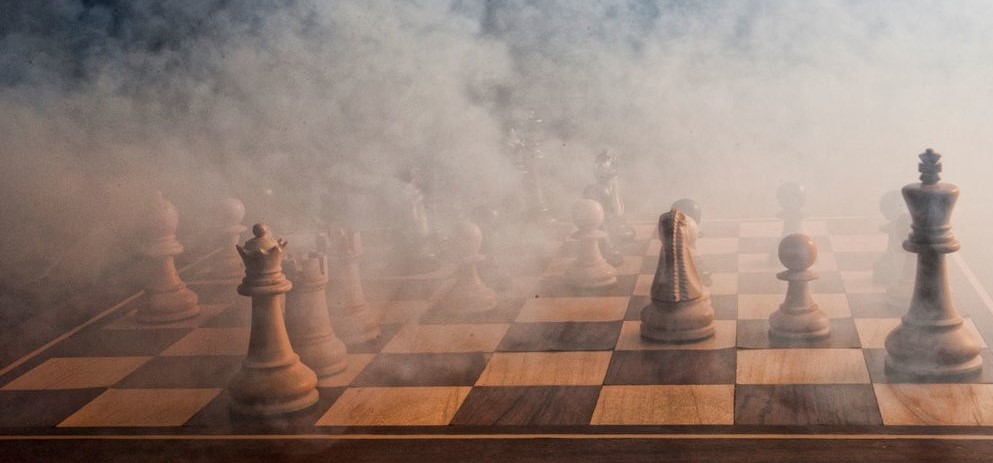



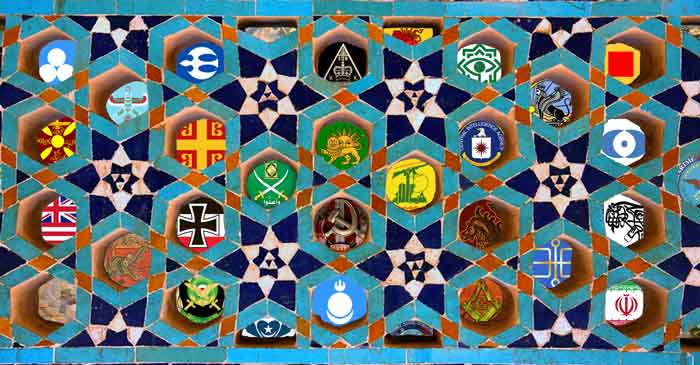
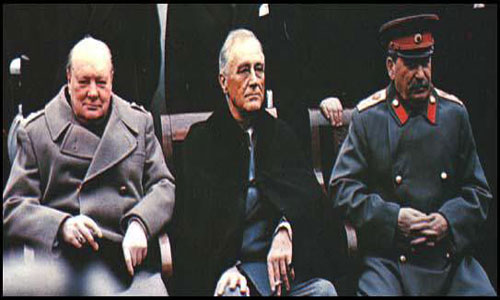

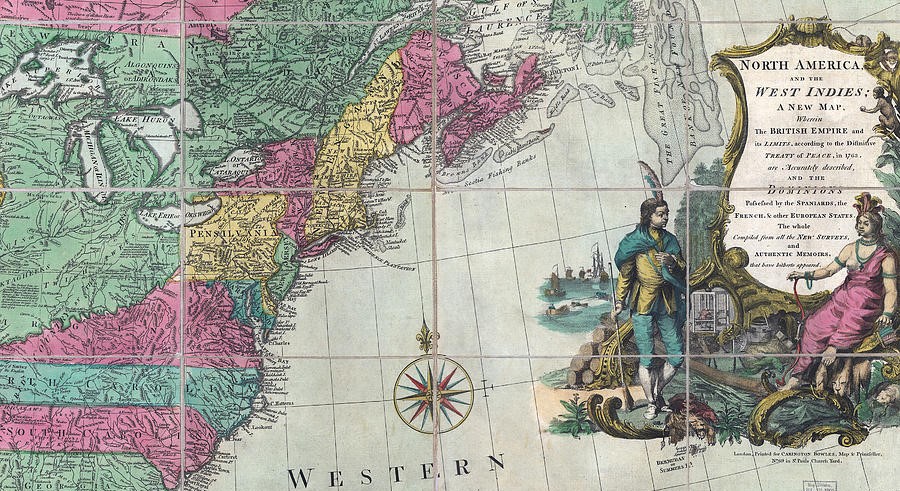
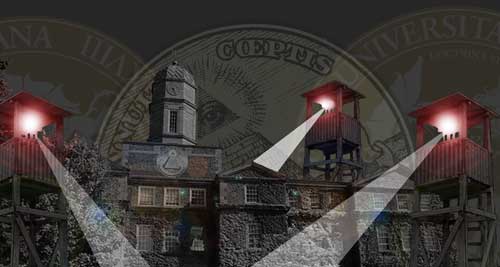
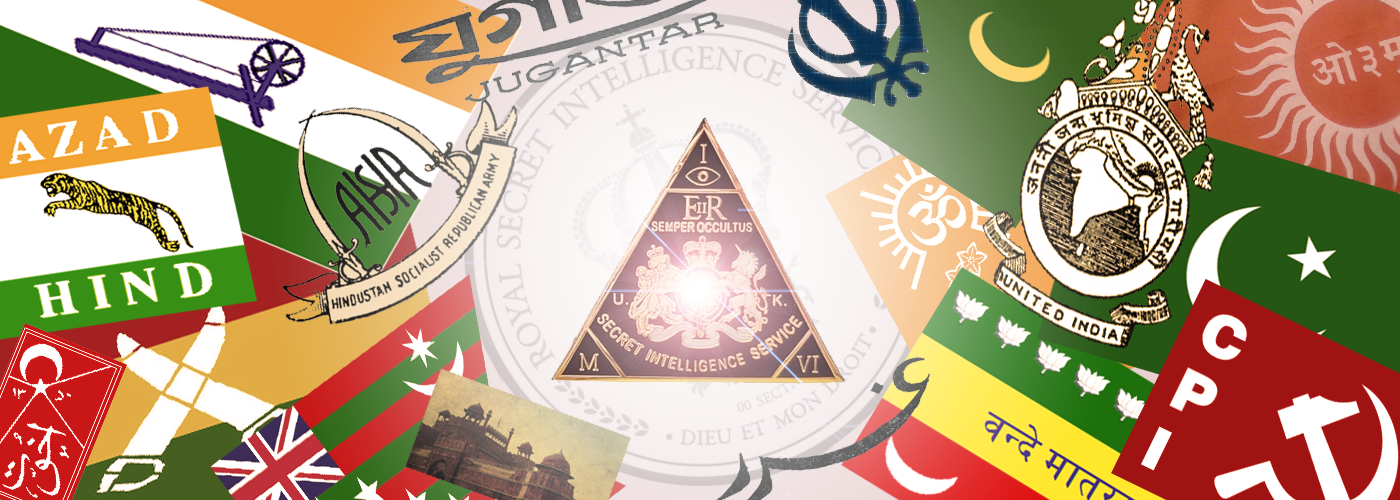


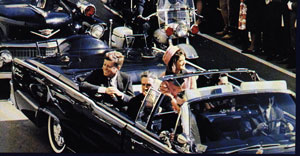

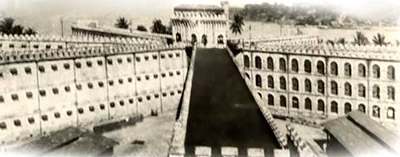


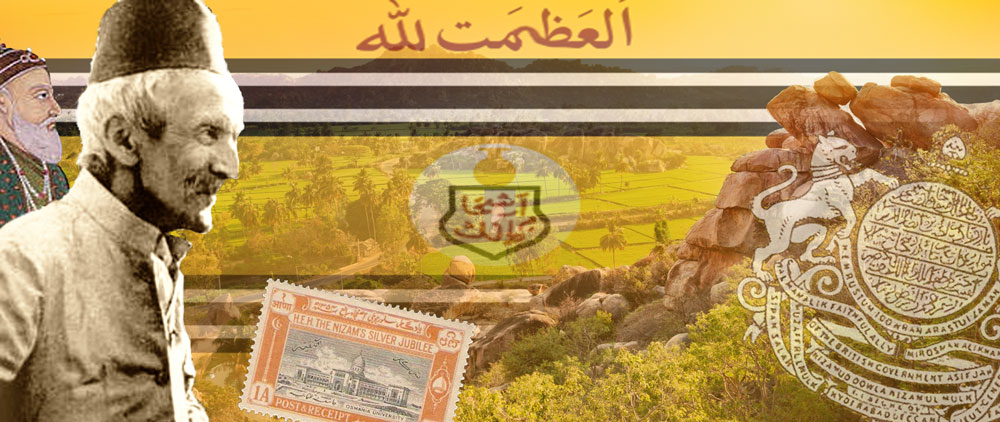






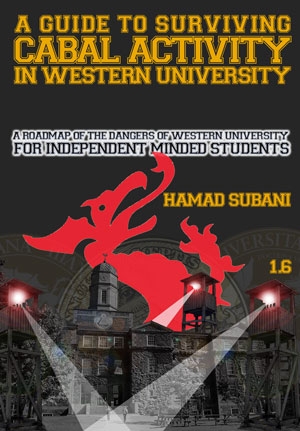
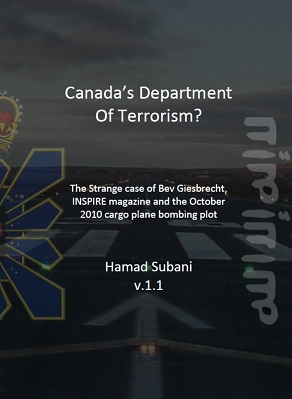
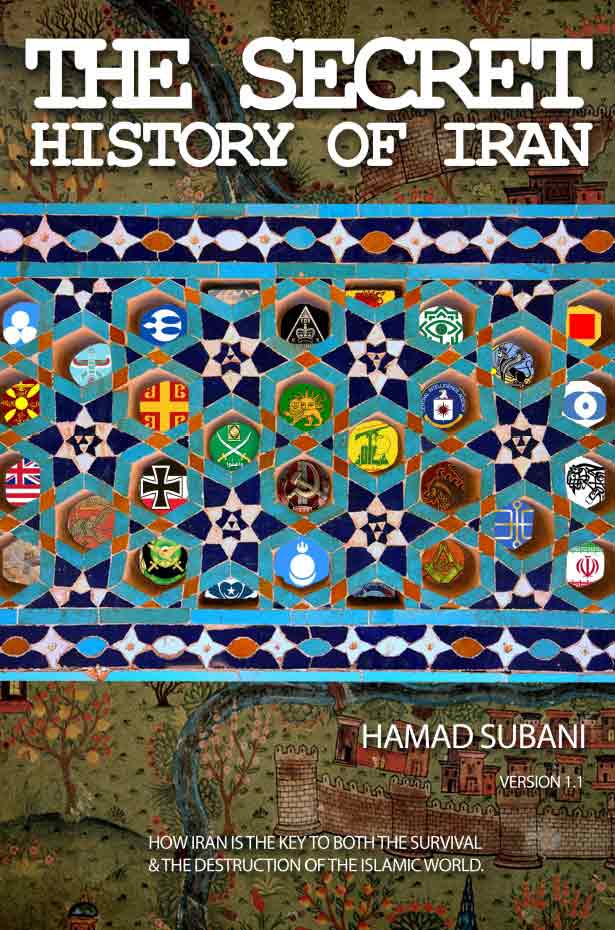
The First Freemason Lodge in India was not at the Gosha Mahal Baradari Hyderabad. It was a grand building built by teh Last Qutub Shahi ruler Tana Shah in 1682 and was donated to teh freemason by Nizam in 1872.
The first lodge was established for the British Military and other authorities in India in 1728 at Fort William Calcutta called Star of the East.
The doors of freemason were opened for Indians in 1775, when Nawab Umdatul Umra of Carnatic opened first lodge in Trichonopoly, in South India.
Please refer Freemasonry in India
https://linfordresearch.info/fordownload/World%20of%20Fmy/Nairn%20India.pdf
Shoukat Ali Khan Hyderabad India
Thanks for this.
The grave of Aurangzeb is in the premises of a Dargah in Khuldabad near aurangabad. there is no tomb over it nor even a structure.
Taj Mahal like structure is in aurangabad, whichis around ten miles away from his grave.
So what you have mentioned about his grave is not correct.
Thank you for the clarification. The Taj Mahal like structure is actually the tomb of his wife. I have corrected.
Gosh !!! what an intellectual article . Very first time I got to read something eloborative on Shah Waliulllah and the reason of his invitation to Abdali. You are incredibly remarkable in presenting the profoundness and minute details on the subject. Are you a historian or have you written any books.
Share your articles or suggest some books on historical India from Muslim rulers point of view. Had enough of Aurangazeb bashing and Muslim rule criticism nowadays around. So was wondering the justification from the other side.
Please do share.
You could take a look at my book The Secret History of Iran. Since the history of medieval Iran is linked to that of India, it does contain a lot of previously undisclosed information on the Mughals and other Indian dynasties as well.
Qasim Rizvi did not escape , he did his prison term and was relocated to Pakistan by the Indian government . I find lots of unsubstantiated facts in your write up.
This is not the official history of Hyderabad State, it is the Conspiracy History of Hyderabad State, where we try to fill in the blanks in the official narrative. Its not for everybody. Do you really think Qasim Rizvi would be let go so leniently?
Hi, certainly, history of Hyderabad is enticing. I have come across a novel “Theft of Nizam’s Gold” by a writer from Hyderabad, Naser Banaqeeb who presented the life of Nizam in a wonderful way. The novel is a gripping tale of bygone era of Nizam, love and mystery of the gold stolen – the history doesn’t have any record of it. Yes, the gold stolen from Nizam’s treasure has no mentioning in any books. But, the author described the same in an artistic manner. The novel is available online at amazon.
Dear Abraiz Ali Khan,
I am based in Mumbai and an avid reader of “authentic” historical books.
I would be much obliged if you could share with me any such books in your possession, including “Tragedy of Hyderabad”.
My contact details are: iyerpnpl@gmail.com
Warm regards,
Arvind Iyer
Hello Mr. Arvind. This is the book I have mentioned: https://www.goodreads.com/book/show/18360701-tragedy-of-hyderabad
I found it in a Sunday, second-hand book market. Currently, this book is with my brother who lives in Canada. Sorry for not being able to share it.
Dear Mr. Abraiz,
I have a nephew in Canada whom I will be meeting at a family function in October. If you can share with me the contact details of your brother in Canada, my nephew can coordinate with him and photocopy the book and hand it over to me when we meet.
Incidentally I am in Hyderabad on Monday June 25th. I would be very happy to meet with you.
Once again my email id is: iyerpnpl@gmail.com
Warm Regards,
Arvind Iyer
Pl visit Haziq and Mohi a book store near Charminar , they have copies . Picked up my copy of Tragedy of Hyderabad and other books on hyderabad from there . The store finds a mention in The Last Nizam by Jhon Zubrcki and is regularly frequented by history buffs , most notable being William Dalrymple , he has given a beautiful account in The White Mughals of William Kirkpatrick the British resident during the end of the 18th century and his affair with Khai un Nissa great niece of Aristu Jah the prime minister at Nizam Ali Khan’s court . He eventually ended up marrying her and converted to Islam . Most of his research work was carried out by literature provided by Haziq and Mohi .
Hello Mr Iyer , you can get the book and many other out of publication books on Hyderabad at Haziq and Mohi book store near Charminar . The store finds a mention in the Last Nizam by Jhon Zubrycki and is frequented by history buffs from India and abroad , most notable being William Darlymple whose book The White mughals revolves around the stories of William Kirkpatrick the british resident at the end of 18th century in Hyderbad and his affair with Khai un Nisa the great niece of Aristu Jah the prime minister of Nizam Ali Khan , which he later marries and converts to Islam .
You may also be interested in The Destruction of Hyderabad by Abdul Gafoor Abdul Majeed Noorani. No idea where to find it though.
Its overwhelming to read this..present day hyderabadis are so ignorant about their past. . I wish many of them could read this
Assalaamualaikum. I am a citizen of Hyderabad itself. Born and brought up here. I do have an interest in our history as well. You have written a very engaging piece of research. Do accept congratulations for it. As it happens, there are a few points that I do disagree with. One is your saying that venerating graves is an “Islamically abhorrent practice.” But maybe you subscribe to one of those sects that see graves as idols, so let it pass. I don’t need to tell you that scholars have compiled voluminous works on this subject. Read them if you will.
The other point that raises my hackles is the flippant description of Jamia Nizamia. As it happens, I am closely related to this institution. All my teachers of Islamic sciences have studied at this institution. Your description of it stems of ignorance or, if you will excuse me for saying so, your prejudice against those venerate graves. Jamia Nizamia was started in 1876 AD. Its founder, who was the teacher (Ataleeq as they called them then) of the 6th and 7th Nizams, passed away in 1917. If you would look into the history of Jamia Nizamia and its scholars, you would see many un-Islamic activities and trends being checked by them. Keep in mind that it was a nascent institution without any power of enforcement. Which means that Jamia Nizamia could only tell that something was wrong and must be stopped, but could not actually go out and stop them. Frankly, there are many firsts the credit of whom goes to Jamia Nizamia and more specifically its founder, Imam Anwarullah Farooqui (May Allah shower His Mercy on him). Hyderabad was the only state to have departments of Qazaath – where marriages, divorces, etc. were registered, the only state to outlaw reprehensible Hindu customs like Murli, etc., the only state to have standardized weights, possibly the only state or one of the very few which trained people with a standardized syllabus to administer basic Islamic laws to the populace. The State Central Library (earlier known as Asafjahi Library) was established at the behest of Shaykh Anwaarullah. No, they were nor politically active. As I said, it was a nascent institution, just started. Maybe in time, if Hyderabad state would have been there, they would have played a greater role.
The best part about your piece is that you give sources. I do have some of the books like Tragedy of Hyderabad with me. I will surely read up as much as I can the source books that you quote and see your point of view in much broader and richer detail.
Best of luck for your future research.
Assalaamualaikum.
Thank you for the additional info on Jamia Nizamia. While I do accept that Jamia Nizamia did in fact play a positive role, I believe that the fact that it was an official institution limited and hindered its ability to fulfill its role in a more wholesome manner. For example, they could not critic the sponsorship and inclusion of Shiite practices of later Nizams. And by and large, they did fail to enlighten the Muslim population, as evidenced by the level of ignorance and the incorporation of non-Islamic practices into Islam by the common people. If The Powers That Be were serious about Islam, they would have supported it more thoroughly, perhaps with a budget much bigger than the war aid they gave to Britain. As you mentioned, they started doing so, but it was too little, and too late.
In Islamic history, Muslim groups attain political power only when they start imposing and reinstating the natural order of things. Otherwise nature overcomes them. Towards the end, the Nizams began failing to maintain their holistic connection to the Mystery Saint.
Dude you are awesome. Where you been?
Do you have any recommendation for occult conspiracy sites with muslim perspective?
The main reason why it’s so hard to find this is the cultural lag muslim readers annnd writers have due to the ravages of colonialism westernization and the like. In the world that emerged after ww2 seems the only ticket for indians and muslims to prosper in the west was the sci/tech route. So as a fractured bordered nation, there was not much literal development.
For example most muslims i know go as far as saying 911 was ‘possibly’ a conspiracy and that Kanye or whoever is a free mason, and that’s as far as it goes. They will never include the saudis or big banks or the company they work for.
Anyway look forward to reading your next masterpiece.
The only “Islamic” Conspiracy website that I find worth a mention is that of David Livingstone> http://www.conspiracyschool.com/